Mulheim an der Ruhr is located between Essen and Duisburg in the southern Ruhr area and has about 170,000 inhabitants. Mulheim is one of the most attractive cities in the Ruhr region, with extensive green spaces, good shopping facilities and a beautiful old town with some nice sights. Coal mining ended in Mulheim 40 years ago. This means that structural change is more advanced here than in many other cities in the Ruhr area.
Our tip: Brewery tour through Dusseldorf with free beer (Altbier): More info and online booking
Forum Mulheim
The Forum is a very large, covered shopping centre in the centre of Mülheim an der Ruhr and is one of Mulheim’s newer attractions. The Forum is directly connected to the main railway station building on one side and to the Schlossstraße pedestrian precinct on the other. The 120-metre-long arcade houses 120 shops, cafés and restaurants with a sales area of 27,500 m².
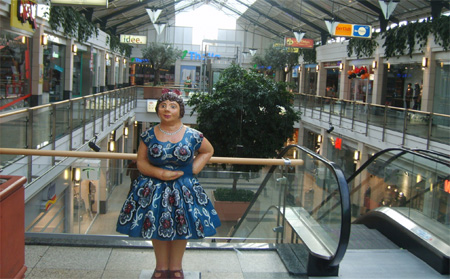
Pedestrian zone
Leaving Forum Mulheim, you enter the long and wide pedestrian zone Schlossstraße. Schlossstraße was the first pedestrian zone in an inner city in Germany in the early 1970s. All the big chains and many small shops are represented in Muhlheim’s well-kept shopping street.
Old Town
Muhlheim’s old town stretches south of the pedestrian zone. You can reach the churches and half-timbered houses via the Friedenstreppe. The word “peace” is written on Mühlheim’s Friendenstreppe in all the world’s major languages, a frequently photographed sight in Mülheim. The most interesting and highest old building in Mülheim is the town hall with its 60-metre high tower. This is located north of the pedestrian zone.
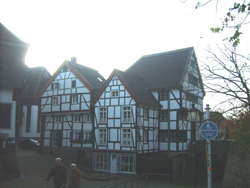
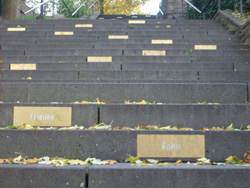
Museums
The office museum of Mulheim is located in the town hall. It mainly presents the technical development of offices on several floors. Unfortunately, the Office Museum is only open on Tuesday and Thursday afternoons (entrance fee 1 euro adults). Current note 2017: Unfortunately, the Office Museum has been closed indefinitely for several years.
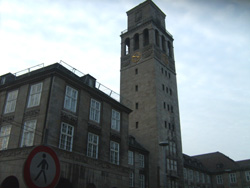
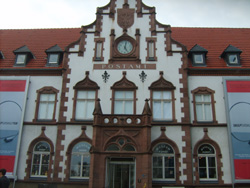
Museum Alte Post
Far better known is the Alte Post art museum in Mulheim, perhaps the most important sight in Mulheim an der Ruhr. The lavishly renovated old post office building not far from the pedestrian zone houses one of the most important art museums in the Ruhr region. The focus is on art from the beginning of the 20th century, especially paintings from the Expressionist period. Among the most important works in the Mülheim Art Museum are the flower paintings by Emil Nolde, but also works by Paul Klee, Käthe Kollwitz and many others.
Opening hours Kunstmuseum Alte Post 2017: daily, except Monday 11am to 6pm, the museum is closed on Mondays and many public holidays.
Entrance fee 2017: €4 entrance fee for adults, families with children pay a maximum of €8 entrance fee, children under 6 years do not have to pay an entrance fee in the museum in the Alte Post Mülheim.
Other great art museums in the Ruhr area are, for example, the Folkwang Museum in Essen (more information on this page) or the Museum Quadrat in Bottrop (more information on this page).
Leather Museum Mulheim
The Leather Museum and Tanner Museum Mulheim is located in Düsseldorfer Straße. In the past, there were many craftsmen and industrial businesses in this street that dealt with leather. Tanners processed animal skins into leather. The history of the leather industry in Mülheim and the production of leather is also presented on an area of several hundred square metres.
How to get there: the Museum of Leather and Tanners is about 2 kilometres away, as seen from the main railway station, on the other side of the Ruhr. Address: Düsseldorfer Straße 269. From the main station, you can take bus 133, for example.
The entrance fee to the Leather Museum and Tanner Museum Mulheim an der Ruhr is only 2 euros, with a reduction, for example for children,1.50 euros. Children under 6 years of age pay no admission to the Leather and Tanning Museum.
Opening hours Leather Museum and Tanner Museum Mulheim: Wednesday, Thursday, Friday, Saturday and Sunday 2 pm to 6 pm. The exhibition is closed on Monday and Tuesday. In summer, the museum usually has a summer holiday, in 2017 from 17 July to 29 August.